Laboratory Manual for Anatomy and Physiology, 6e Loose-Leaf Print Companion with WileyPLUS Blackboard Card Set
6th Edition
ISBN: 9781119425861
Author: Allen
Publisher: WILEY
expand_more
expand_more
format_list_bulleted
Concept explainers
Question
Chapter 20, Problem 4UYK
Summary Introduction
Introduction: Magnetic field and radio waves have been useful tools in medical diagnostics. Magnetic resonance imaging (MRI) is used to visualize the internal anatomy of the human body by passing a strong magnetic field and radioactive waves to scan the internal organs and produce images.
Expert Solution & Answer
Want to see the full answer?
Check out a sample textbook solution
Students have asked these similar questions
Despite two individuals having high BMI with similar values, one person is more susceptible to cardiovascular disease than the other. This persons's obesity is known as
Group of answer choices
genetic obesity
dietary obesity
android obesity
gynoid obesity
It is generally believed that earlier adaptation to cold would affect survival in hypoxia. This effect is known as-
Group of answer choices
habituation
negative acclimatization
positive acclimation
accommodation
How is convection altered in a hot sauna room? What would be the net heat exchange? Use appropriate formula to explain.
Chapter 20 Solutions
Laboratory Manual for Anatomy and Physiology, 6e Loose-Leaf Print Companion with WileyPLUS Blackboard Card Set
Ch. 20 - Prob. 1.1BGLCh. 20 - Label the brain stem structures on Figure 20.2(a)...Ch. 20 - Prob. 3.1BGLCh. 20 - Label the diencephalon structures in Figure...Ch. 20 - Label the gray and white matter in Figure...Ch. 20 - Label the structures listed for Figure 20.6 and...Ch. 20 - Label the functional areas of the cortex in Figure...Ch. 20 - Observe the cranial meninges in Figure 20.9(a).
Ch. 20 - Label the structures in Figure 20.9(b).
Ch. 20 - Label the structures in Figure 20.10(a), (b), and...
Ch. 20 -
______________________________________
Ch. 20 -
______________________________________
Ch. 20 -
______________________________________
Ch. 20 -
______________________________________
Ch. 20 -
______________________________________
Ch. 20 -
______________________________________
Ch. 20 -
______________________________________
Ch. 20 -
______________________________________
Ch. 20 -
______________________________________
Ch. 20 -
______________________________________
Ch. 20 -
______________________________________
Ch. 20 -
______________________________________
Ch. 20 -
______________________________________
Ch. 20 -
______________________________________
Ch. 20 -
_______________
Ch. 20 -
______________________________________
Ch. 20 - Prob. 17BSCh. 20 -
______________________________________
Ch. 20 -
______________________________________
Ch. 20 -
______________________________________
Ch. 20 -
______________________________________
Ch. 20 -
______________________________________
Ch. 20 - _______________ Contains vital centers that...Ch. 20 - _______________ Smoothes and coordinates skilled...Ch. 20 - Prob. 3FBRCh. 20 - _______________ Controls and integrates the...Ch. 20 - _______________ Interprets sensory input, controls...Ch. 20 - _______________ Helps control breathing; conducts...Ch. 20 - _______________ Relays all sensory input to the...Ch. 20 - _______________ Coordinates visual and auditory...Ch. 20 - _______________ Coordinates gross, automatic...Ch. 20 - _______________ White fiber tracts communicating...Ch. 20 - The sites of CSF formation are the...Ch. 20 - special tiny capillaries located in the walls of...Ch. 20 - special tiny capillaries located in the walls of...Ch. 20 - special tiny capillaries located in the walls of...Ch. 20 - Prob. 5FCFCh. 20 - The two lateral ventricles are separated by a thin...Ch. 20 - CSF flows by cilia movement from the two lateral...Ch. 20 - Prob. 8FCFCh. 20 - Prob. 9FCFCh. 20 - CSF continues to flow into the inner part of the...Ch. 20 - CSF continues to flow into the inner part of the...Ch. 20 - Because CSF is continually being made at the rate...Ch. 20 - The venous sinus that overlies the brain...Ch. 20 -
___________________________________________
Ch. 20 -
___________________________________________
Ch. 20 -
___________________________________________
Ch. 20 -
___________________________________________
Ch. 20 -
___________________________________________
Ch. 20 -
___________________________________________
Ch. 20 -
___________________________________________
Ch. 20 -
___________________________________________
Ch. 20 -
___________________________________________
Ch. 20 -
___________________________________________
Ch. 20 -
___________________________________________
Ch. 20 -
___________________________________________
Ch. 20 -
___________________________________________
Ch. 20 -
___________________________________________
Ch. 20 -
___________________________________________
Ch. 20 -
______________________________________
Ch. 20 -
_______________________________________
Ch. 20 -
_______________________________________
Ch. 20 -
_______________________________________
Ch. 20 - Prob. 20UYK
Knowledge Booster
Learn more about
Need a deep-dive on the concept behind this application? Look no further. Learn more about this topic, biology and related others by exploring similar questions and additional content below.Similar questions
- How have the Arctic Inuits (people living in the Arctic) been able to stay in such cold conditions for so long? List and explain your reasons.arrow_forwardRecently I saw an action movie where the kidnappers accidentally killed the business tycoon by immersing his face in ice water. What could be the cause of death in this case? Group of answer choices vasodilation of peripheral vessels restriction of limb movement cardiac arrhythmia inability to open the eyesarrow_forwardBesides lack of food, what are the other physiological conditions that exacerbate the effects of starvation in developing countries?arrow_forward
- 1. A few years back, the faculty in Biology department faced complete loss of their research labs and office space due to unexpected flooding. This was early in the morning when students had come on-campus for their classes and faculty were ready to start teaching. a. Briefly explain the pathway that would have been activated in this acute stress. b. Also, considering that it was a while before things resumed to normal, explain what the effects of chronic stress under such conditions were.arrow_forwardwhich produces such as Cellular Respiration begins with NAD+ which is broken down during, to make which produces which occurs in the in the presence of anaerobic respiration that is used in pyruvate that is used in aerobic respiration alcohol such as which produces which is used in the to make 32 ATP -which produces which occurs in the starting with which occurs in thearrow_forwardDay 3-A: Venn Diagram Directions: Using the Venn diagram, describe a pure substance using the properties of elements and compounds. Write only the letters corresponding to your responses. PURE SUBSTANCE ELEMENTS COMPOUNDS A. It is the simplest form of matter.. B. It cannot be separated into simpler components by chemical means. C. It is made by two or more elements combined. D. It serves as the building block of other substances. E. Examples are oxygen, hydrogen, carbon, and gold. F. It can be separated into simpler substances by chemical means. G. It is represented by a chemical formula. H. Examples are water, sugar, salt, and baking soda. 3arrow_forward
- Describe in details the two molecular processes in steroid and peptide actionarrow_forwardCan you choose one topic of interest associated with microbiology, human diseases and / or human health.arrow_forwardPatients identified as at risk for falling are the most likely to suffer an Unanticipated Physiological fallarrow_forward
arrow_back_ios
SEE MORE QUESTIONS
arrow_forward_ios
Recommended textbooks for you
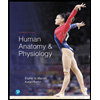 Human Anatomy & Physiology (11th Edition)BiologyISBN:9780134580999Author:Elaine N. Marieb, Katja N. HoehnPublisher:PEARSON
Human Anatomy & Physiology (11th Edition)BiologyISBN:9780134580999Author:Elaine N. Marieb, Katja N. HoehnPublisher:PEARSON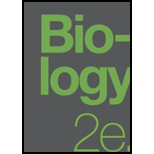 Biology 2eBiologyISBN:9781947172517Author:Matthew Douglas, Jung Choi, Mary Ann ClarkPublisher:OpenStax
Biology 2eBiologyISBN:9781947172517Author:Matthew Douglas, Jung Choi, Mary Ann ClarkPublisher:OpenStax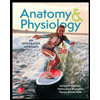 Anatomy & PhysiologyBiologyISBN:9781259398629Author:McKinley, Michael P., O'loughlin, Valerie Dean, Bidle, Theresa StouterPublisher:Mcgraw Hill Education,
Anatomy & PhysiologyBiologyISBN:9781259398629Author:McKinley, Michael P., O'loughlin, Valerie Dean, Bidle, Theresa StouterPublisher:Mcgraw Hill Education,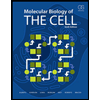 Molecular Biology of the Cell (Sixth Edition)BiologyISBN:9780815344322Author:Bruce Alberts, Alexander D. Johnson, Julian Lewis, David Morgan, Martin Raff, Keith Roberts, Peter WalterPublisher:W. W. Norton & Company
Molecular Biology of the Cell (Sixth Edition)BiologyISBN:9780815344322Author:Bruce Alberts, Alexander D. Johnson, Julian Lewis, David Morgan, Martin Raff, Keith Roberts, Peter WalterPublisher:W. W. Norton & Company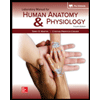 Laboratory Manual For Human Anatomy & PhysiologyBiologyISBN:9781260159363Author:Martin, Terry R., Prentice-craver, CynthiaPublisher:McGraw-Hill Publishing Co.
Laboratory Manual For Human Anatomy & PhysiologyBiologyISBN:9781260159363Author:Martin, Terry R., Prentice-craver, CynthiaPublisher:McGraw-Hill Publishing Co.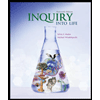 Inquiry Into Life (16th Edition)BiologyISBN:9781260231700Author:Sylvia S. Mader, Michael WindelspechtPublisher:McGraw Hill Education
Inquiry Into Life (16th Edition)BiologyISBN:9781260231700Author:Sylvia S. Mader, Michael WindelspechtPublisher:McGraw Hill Education

Human Anatomy & Physiology (11th Edition)
Biology
ISBN:9780134580999
Author:Elaine N. Marieb, Katja N. Hoehn
Publisher:PEARSON

Biology 2e
Biology
ISBN:9781947172517
Author:Matthew Douglas, Jung Choi, Mary Ann Clark
Publisher:OpenStax

Anatomy & Physiology
Biology
ISBN:9781259398629
Author:McKinley, Michael P., O'loughlin, Valerie Dean, Bidle, Theresa Stouter
Publisher:Mcgraw Hill Education,

Molecular Biology of the Cell (Sixth Edition)
Biology
ISBN:9780815344322
Author:Bruce Alberts, Alexander D. Johnson, Julian Lewis, David Morgan, Martin Raff, Keith Roberts, Peter Walter
Publisher:W. W. Norton & Company

Laboratory Manual For Human Anatomy & Physiology
Biology
ISBN:9781260159363
Author:Martin, Terry R., Prentice-craver, Cynthia
Publisher:McGraw-Hill Publishing Co.

Inquiry Into Life (16th Edition)
Biology
ISBN:9781260231700
Author:Sylvia S. Mader, Michael Windelspecht
Publisher:McGraw Hill Education
Information Storage and the Brain: Learning and Memory; Author: Professor Dave Explains;https://www.youtube.com/watch?v=PQDiUKwXLVI;License: Standard youtube license